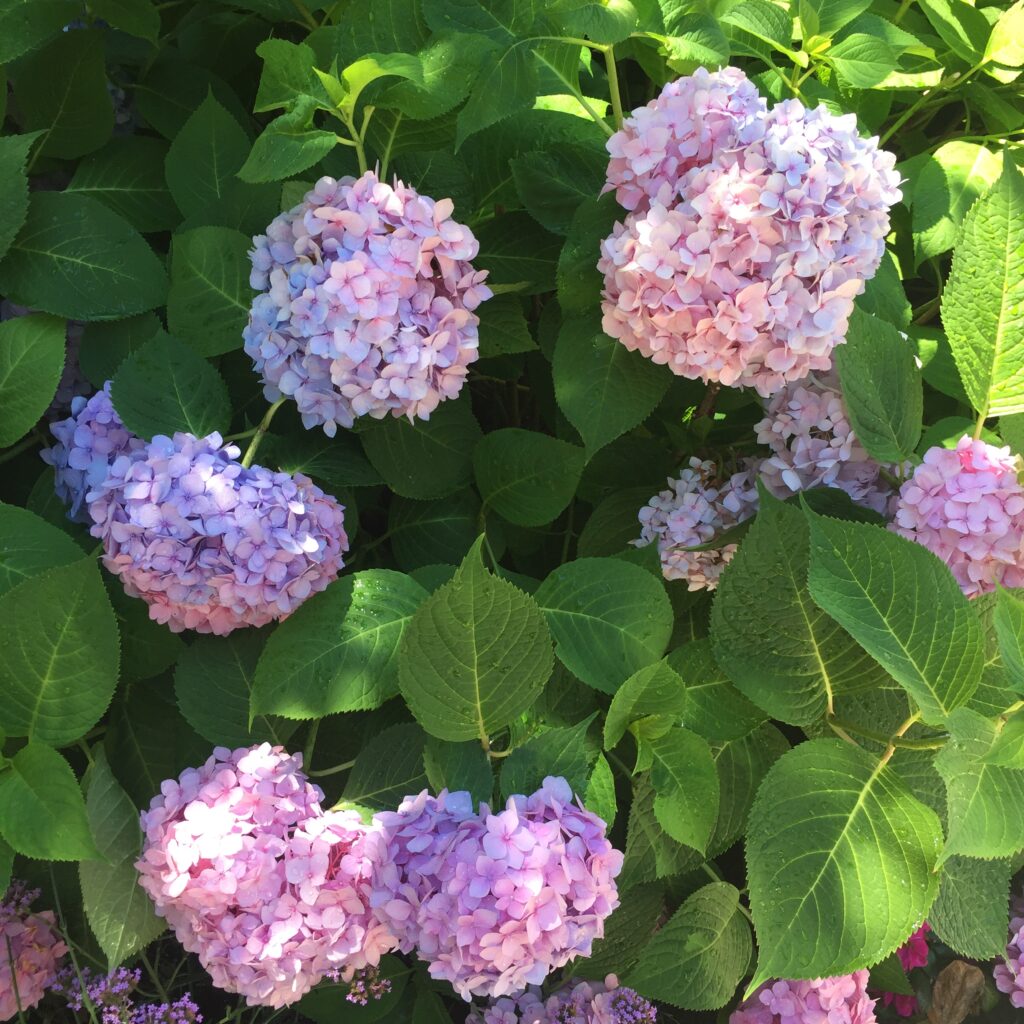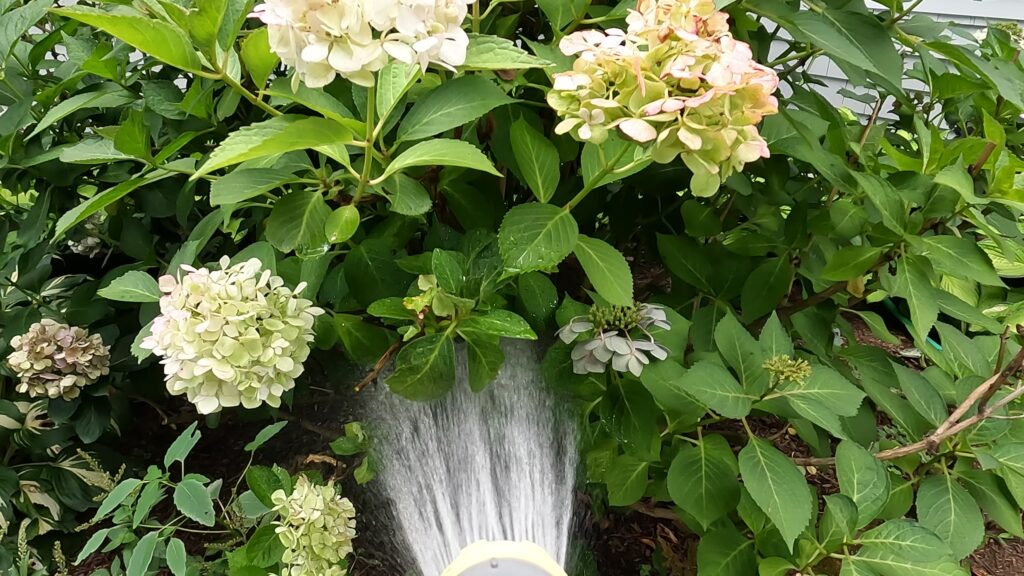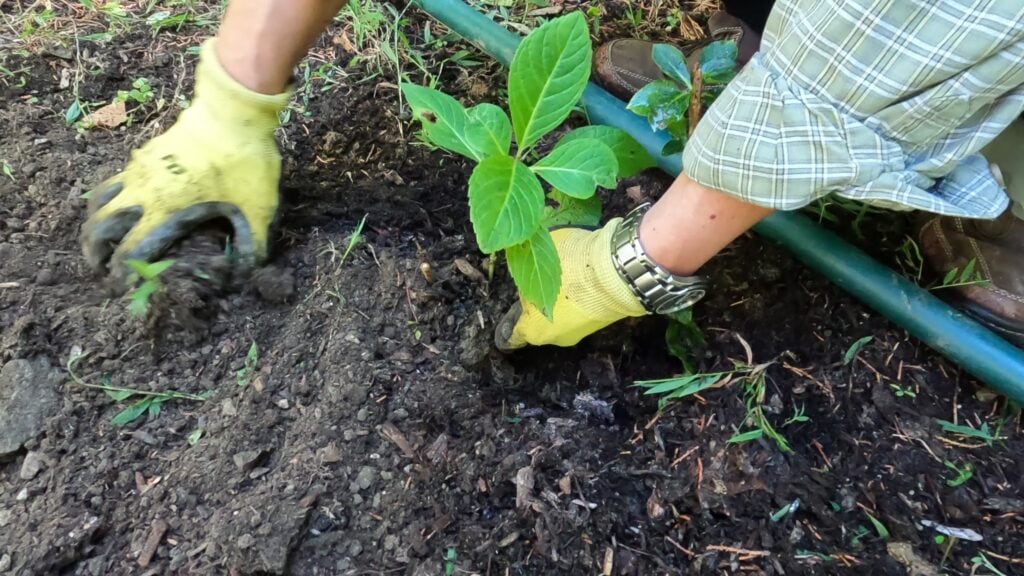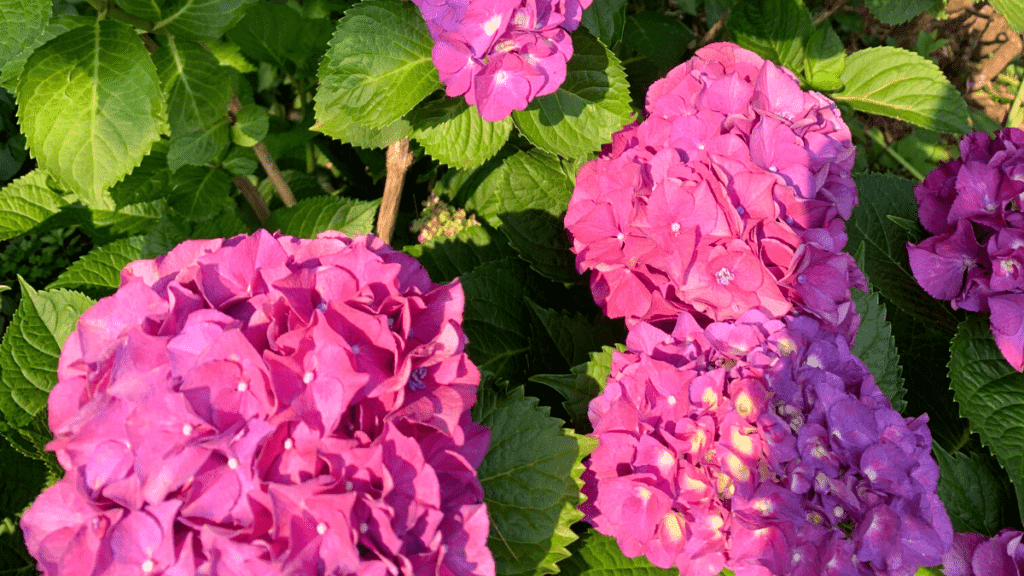Are you planning to transplant hydrangeas in the summer? Are you wondering if it’s a good idea to transplant hydrangeas in the summer? And when is the best time to transplant hydrangeas?
Well, today, I’m here to answer your question and provide you with valuable tips for a successful summer transplant.
Planting 101 participates in affiliate programs including Amazon Associates Program and may earn commission from qualifying purchases at no extra cost to you. Thank you for your support.

Can You Transplant Hydrangeas in the Summer?
Yes, you can transplant hydrangeas in the summer. However, keep in mind that transplanting hydrangeas in the summer can be tricky and more work for you!
The summer heat will pose challenges when it comes to transplanting hydrangeas. You will need to be more vigilant in caring for your hydrangeas so they don’t dry out after transplanting (the scorching sun and high temperatures!)
What this means for you is when you transplant your hydrangeas in the summer, you need to water your hydrangeas every day or every other day so it doesn’t dry out and to promote root growth.
If you have a tendency to be a lazy gardener or if you are too busy- don’t transplant your hydrangeas in the summer.
You need to be home to water your hydrangeas! That means you can’t even go away on vacation at least for the first month after transplanting your hydrangeas! Make sure you are ready to commit before you transplant your hydrangeas in the summer.
If you can’t commit, then I suggest waiting until the Fall or Spring of next year to transplant your hydrangeas.

When Should You Transplant Hydrangeas in the Summer?
Early summer is best when it comes to transplanting hydrangeas in the summer, before the intense summer heat sets in! This allows your hydrangea to establish its roots before facing the full brunt of summer.
Where I live in Connecticut, June is the best time for transplanting hydrangeas in the summer. The weather is usually milder so the soil can retain moisture.
I suggest checking the weather forecast before transplanting your hydrangeas in the summer. You want to do the transplant when the temperature is cooler and not excessively hot. You never want to transplant your hydrangeas when there is a heatwave in the summer!
What Time Should You Transplant Your Hydrangeas in the Summer?
It’s best to transplant hydrangeas in the morning or late afternoon to evening hours when the temperature is cooler and the sun is not intense. This will help with moisture retention and minimize stress on your hydrangeas.
Best Location to Transplant Hydrangeas in the Summer
When transplanting hydrangeas in the summer, choosing the right spot is crucial for success.
Plant Hydrangeas in Sun vs Shade
Hydrangeas prefer locations with partial shade or filtered sunlight. Look for an area in your garden that receives morning sun and afternoon shade, especially if you live in a place with really hot summers.
Too much direct sunlight during the hottest parts of the day can cause stress and dehydration for your hydrangea!
Walk around your garden and observe the sunlight. Find a spot that is partially shaded but still gets a few hours of sunlight either in the morning or in the afternoon.
I find that choosing the right location will make it easier for future upkeep because you don’t have to water as frequently since it won’t dry out as quickly if planted in partial shade.

Plant Hydrangeas near Water Source
When transplanting hydrangeas in the summer, make sure you plant them in a spot that is near a water source. Since you will need to do regular watering throughout the summer, you don’t want to be far from your outdoor faucet.
Make sure your garden hose is long enough to reach your newly transplanted hydrangea. Or else you will end up having to lug a heavy water can every day just to water your hydrangeas!

Plant Hydrangeas in a Protected Spot
Look for a location that will provide some protection against strong winds and intense heat. Plant your hydrangeas near a larger plant, wall, or fence- these can serve as windbreakers.
But don’t plant your hydrangeas too close to the other plants, fence, or wall because you want to make sure you give it enough space and air circulation to prevent overcrowding!
Plant Hydrangeas in Well-Draining Soil
Make sure to choose a spot with well-draining soil before planting your hydrangeas. For example, in my garden, there are a lot of rocks and ledge so I always dig first to check the soil to make sure it’s well-draining and there are no giant rocks in the soil, and that there is enough room for the roots to grow.
Avoid Planting Hydrangeas on a Steep Slope
Ideally, you should plant hydrangeas where there is no slope. One of the main concerns when planting on a steep slope is soil erosion. Hydrangeas prefer well-draining soil, but on a slope, water can quickly wash away the soil and expose the roots. You can control soil erosion by mulching or even building retaining walls.
Another concern with planting hydrangeas on a steep slope is water drainage. Water will flow downhill too quickly, leading to insufficient moisture for your hydrangea!
You can still plant your hydrangea on a slope. I have a mild slope in my backyard and have planted hydrangeas there with no issues- the key is to find a spot that is not too steep so you can strike a balance between proper drainage and water retention.
Avoid Planting Hydrangeas Where Water Pools
Avoid planting hydrangeas in areas where water pools or accumulates, especially if the spot tends to be slow-draining.
For example, I have a section in my backyard that consistently collects water after heavy rainstorms. Somehow all the water ends up there! It’s best to avoid planting hydrangeas there. This slow-draining area can lead to waterlogged soil, which can cause root rot.
Observe your garden and identify any other areas prone to water accumulation. For example, be mindful of spots near gutter downspouts or areas where water tends to collect after rainfall. Planting hydrangeas in these waterlogged areas can result in root rot and ultimately harm the plant.
Look for areas in your garden where water flows away easily or where the soil naturally drains well. This will help prevent waterlogged soil and promote healthy root development.
How to Transplant Hydrangeas in the Summer
Follow these step-by-step instructions to ensure a successful summer transplant for your hydrangeas:
Transplant Hydrangeas in the Morning or Late Afternoon/Early Evening
Transplant your hydrangeas in the morning, preferably before the most intense heat sets in. If you can’t transplant your hydrangeas in the morning, then do it in the late afternoon/early evening when the temperature is cooler.
Transplant Hydrangeas in Partial Shade and Well-Draining Soil
Find a spot in your garden to transplant your hydrangea. Ideally, you want to transplant it in a location with partial shade and has well-draining soil.
Prepare the New Planting Hole
Dig a hole slightly larger than the root ball of the hydrangea. You can amend the soil- add fertilizer, and compost (I like to use cow manure) to the soil for extra nutrients.
Water the Hydrangea
Thoroughly water the hydrangea in its current container (or the soil if your hydrangea is in-ground) a day or two before transplanting. This will make it easier for you to transplant and will help with moisture retention.
Remove the Hydrangea
Tip the hydrangea container to the side and carefully remove it from the container. It shouldn’t be that hard to remove the hydrangeas from the container if you watered your hydrangea the day before.
If you are transplanting from an in-ground hydrangea, dig out with a shovel, it should be fairly easy to dig out the hydrangea with a shovel if the soil is wet from watering.
Place the Hydrangea in the Soil
Plant the hydrangeas in the soil. Carefully massage the roots of the hydrangea to loosen it a bit before planting it in the soil.

Water and Mulch the Hydrangea
Water the newly planted hydrangea. Then add a layer of mulch to help with moisture retention.
Keep Up with the Watering
Regularly water your newly planted hydrangeas. You don’t want it to dry out in the summer heat! You need to check on it every day and water it every day or every other day.
Keep an eye out for any signs of stress, such as wilted leaves. That’s a sign that it needs more watering. Feel the soil, if it feels dry, it’s time to water.
Do keep a balance, and don’t overwater!
So, can you transplant hydrangeas in the summer? Absolutely! Transplanting hydrangeas in the summer just requires more planning, care, and attention. Remember to closely monitor your newly transplanted hydrangeas and water regularly. That means don’t go on vacation!
By following these tips, you’ll give your summer transplanted hydrangeas the best chance to grow. Happy gardening!
You May Also be Interested in these Hydrangea Care Tips
Step by Step: How to Easily Propagate Hydrangeas (video)
How to Deadhead Hydrangeas (video)
How to Make Hydrangeas Flower (video)
Beginner’s Guide: How to Care for your Hydrangea (video)

